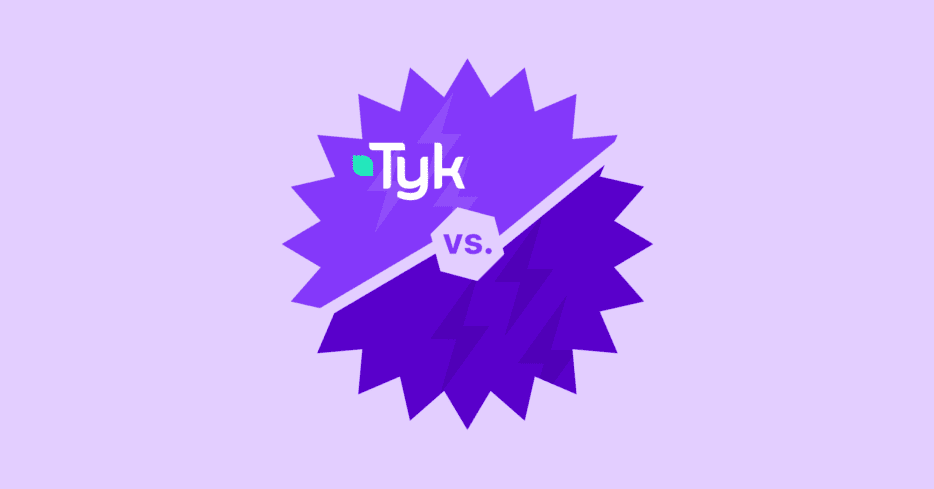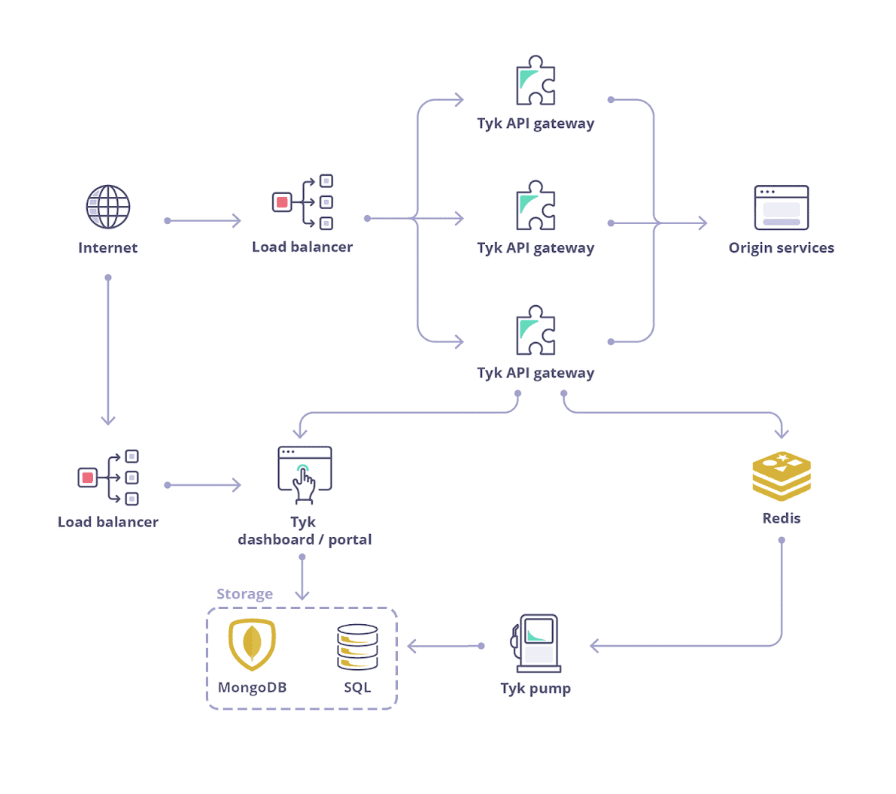
Tired of empty promises? We get it. So let’s let the numbers speak for themselves.
*You can replicate all of these tests yourself here
, and see an interactive dashboard that is generated by our open source testing framework here.
1. Tyk is built with Golang
Tyk components are written from the ground up in Go, the language of Kubernetes, Docker, and more. There is a reason all of us picked this language – it is blazingly fast. Go is more memory and CPU efficient than Java, the programming choice of Gravitee.
This allows the Tyk to more effectively utilize (V)CPU, whilst being more memory efficient. More on that below.
2. Architecture & scaling
Tyk’s components are microservices, designed this way so you can precisely control which resources are given to which components and isolate pure API gateway request handling from any asynchronous action that can be off-loaded to other services.
In short, Tyk has the most flexible architecture in the game. If you add more CPU, memory, or horizontal scaling to the gateway, it goes exactly there as opposed to being split across components that won’t use it.
Tyk Architecture in a single DC deployment. Each service independently scalable and intelligently designed for performance and redundancy
3. Tyk off-loads CPU computation of API analytics
Despite being a set of microservices, Gravitee includes processing API analytics and shipping to the database in the hot path of the actual Gateway. We think this a huge design flaw for enterprise systems. Processing API analytics is both computationally, memory, and network-intensive, resulting in serious performance hits while done in-band.
In contrast, Tyk Gateway offers a more efficient approach. It temporarily offloads API analytics into Redis lists, where they are processed out of band by a dedicated Tyk component: Tyk Pump, which can be independently scaled vertically and horizontally in accordance with traffic profile.
In a test run with analytics enabled, you can see the largest contrast between the two Gateways, with Tyk serving requests 768x faster at P99, and 2021x faster at P95.
That’s right – we’re talking about an entire order of magnitude in performance difference, where Tyk’s P95 is reported by Grafana in hundreds of Microseconds, and Gravitee’s P95 in hundreds of milliseconds.
Read more about Tyk Pump here.
4. Instant vs delayed reactions
- Tyk is better than Gravitee at handling spikes. This can be observed in constant-vus and constant arrival rate tests.
- Tyk scales much faster than Gravitee. From a cold start, Tyk will be ready to receive traffic within about 3 seconds. In comparison, Gravitee will take around 3-4 minutes.
- When generating keys, Gravitee has a delay in key propagation to Gateway which causes 401s at the start of any authenticated tests. After startup, it takes about a minute for keys to propagate – we are not sure why.
You can replicate all of these tests yourself and see an interactive dashboard that is generated by our open source testing framework here.
If you have any comments or queries in relation to this page, please contact [email protected]
